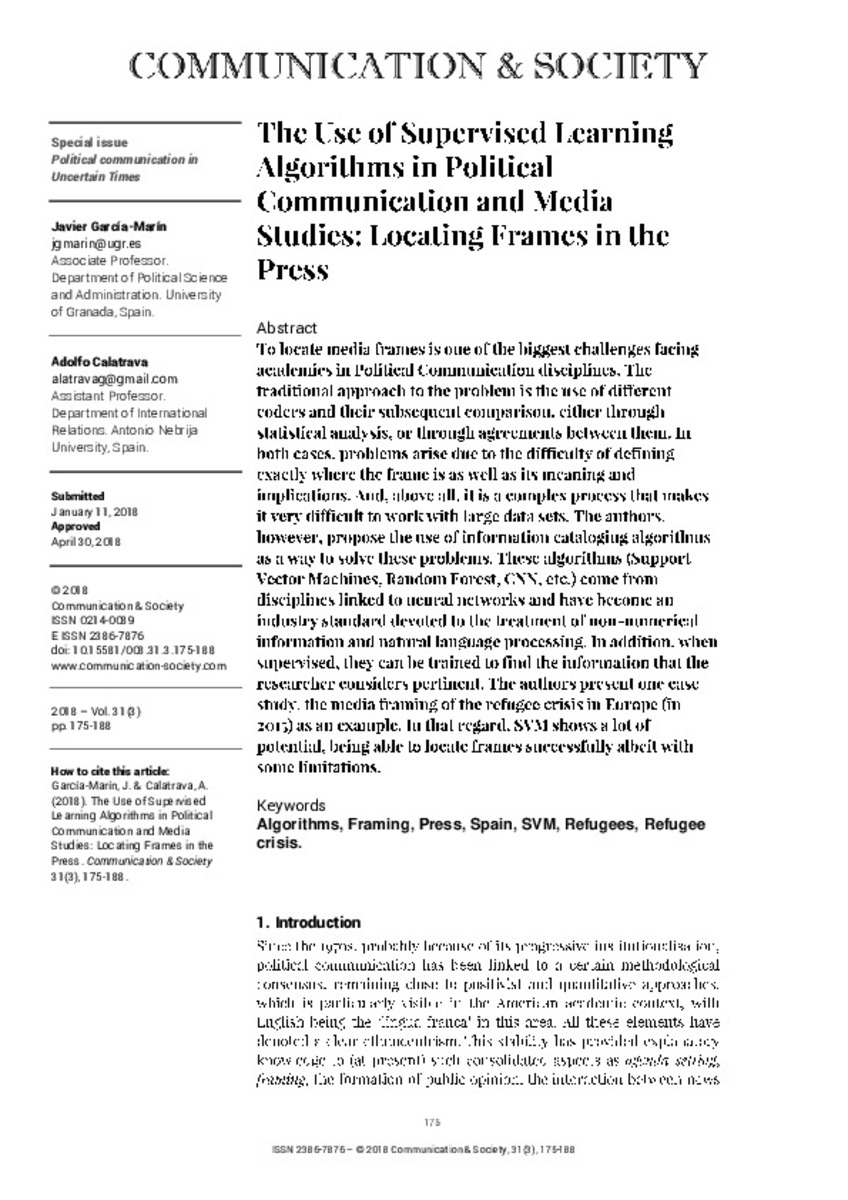The Use of Supervised Learning Algorithms in Political Communication and Media Studies: Locating Frames in the Press
Keywords:
Algorithms
Framing
Press
Spain
SVM
Refugees
Refugee crisis
Publisher:
Servicio de Publicaciones de la Universidad de Navarra
Citation:
García-Marín, J. (Javier); Calatrava, A. (Adolfo). "The Use of Supervised Learning Algorithms in Political Communication and Media Studies: Locating Frames in the Press". Communication & Society. 31 (3), 2018, 175 - 188
Statistics and impact
0 citas en

0 citas en

Items in Dadun are protected by copyright, with all rights reserved, unless otherwise indicated.







